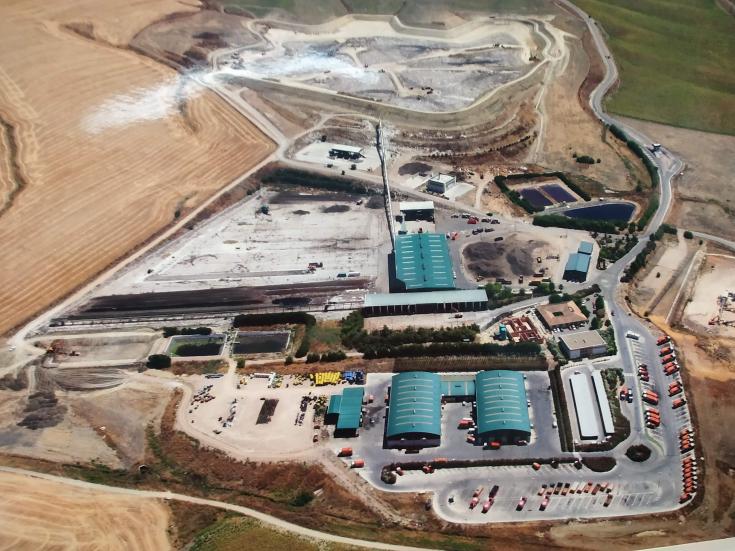Innovative biowaste treatment solutions: key learnings

On 30 April 2024, the Policy Learning Platform hosted the second episode of the webinar series from waste to resource: innovative biowaste treatment solutions.
During this second episode, we discovered motivational strategies, successful methods, and useful advice, all demonstrated through real-life examples from Interreg Europe projects.
Explore the recording, key learnings and presentations below.
Webinar agenda
The webinar has been designed and moderated by Magda Michaliková and Astrid Severin , Thematic Experts for a Greener Europe.
00:00:58 Introduction by Astrid Severin and Magda Michaliková
00:12:21 Keynote speech by Steffen Walk, European Compost Network (ECN), Bochum, Germany on the importance of high-quality biowaste
00:27:58 Q&A: What do you think is gonna be key for collecting the 40 million tons of biowaste left?
00:30:53 Q&A: Is the tax for incineration and landfilling an instrument on a local level (Andalucia) or a national level (Spain)?
00:35:22 Presentation by Loes Vandecasteele, City of Mechelen (Belgium) on Composting at home (CITISYSTEM)
00:46:07 Q&A: Do you accept all kind of food waste in the composters? How do you deal with ABP?
00:46:52 Q&A: Is there a procedure to prove that home-composting is done properly?
00:47:48 Q&A: Could you please repeat what Vlaco is? is it a government agency? Is there a similar organisation as Vlaco another countries?
00:49:23 Q&A: Do you account home composting as recycling for achieving the recycling targets or is as seen as prevention measure of food waste.
00:49:44 Q&A: Do you think this can easily be transfered to other regions?
00:51:40 Presentation by Dietmar Cavosi, Eco Center s.p.a. (Italy) on Anaerobic digestion of organic waste in the Province of Bolzano (CORE)
01:01:54 Q&A: During/after dewatering, where does the residual water goes? Is it treated locally? how much water does the process use per tonne of bio-waste?
01:03:47 Q&A: Where does sand content in separately collected bio-waste come from?
01:04:41 Q&A: What is the share of between green and kitchen waste in the input? The high yield suggests a rather low share of green waste.
01:05:15 Q&A: What would be needed for your plant to accept bio-plastics? or will this generate a whole new production concept?
01:06:06 Q&A: How many paper bags are given to each household per year?
01:07:26 Q&A: What is the use of generate heat?
01:09:10 Presentation by Emiel Elferink, Van Hall Larenstein (Netherlands) on Bokashi: Upgrading local organic residues (COLOR CIRCLE)
01:20:47 Q&A: Is any kind of compost allowed by legislation to use on the land or is there any label/certification needed for it? Because, here in Belgium even compost is still seen as a waste product.
01:21:59 Q&A: Would you recommend Bokashi to farmers rather composting?
01:23:38 Q&A: Is there any publication from the study conducted?
01:24:14 Q&A: What with impurities and pathogens in input? Which options to pre-/post-treat on the one hand..and hygienise on the other hand?
01:26:33 Q&A: What is your process temperature? Does hygienisation take place in the process? Do you have any results on testing weed seeds and plant response of your output material?
01:27:48 Key take-aways from the speakers.
Key learnings
- Residual waste still comprises 39% biowaste, mostly food waste
- Extra 40 M tpa of municipal biowaste needs to be separately collected!
- The three most applied treatment technologies are composting, anaerobic digestion and a combination of both
- Other innovative treatments are also possible, e.g. bokashi – a fermentation of green waste
- Product quality depends on the feedstock quality
- Some challenges in treatment include biodegradable plastics (do not decompose quickly enough) and other impurities
- Many good practices exist and municipalities and regions can learn from them, instead of reinventing the wheel (discover the Interreg Europe good practice database)
- It is important to have a central organisation that provides information to citizens. Raising awareness and communication is key.
- Always plan to make treatment facilities bigger in the future
- Consider moving from a centralised process to a decentralised process
Presentations
Download the presentations below.

